Plants absorb nutrients from the soil through their roots. Most fertilizers and composts include ingredients that are crucial to plant and soil health. But, most fertilizers don’t contain calcium. So how should you add calcium to soil?
Calcium helps to hold the cell walls of plants together. When cell walls form improperly, it can adversely affect the growth of shoot tips, young leaves, and root tips, causing distorted growth.
By adding calcium to the soil or fertilizer, you can ensure that the plants will grow optimally and absorb the necessary nutrients from the soil.
Read this article if you’re new to gardening and would like to know what plants need to grow.
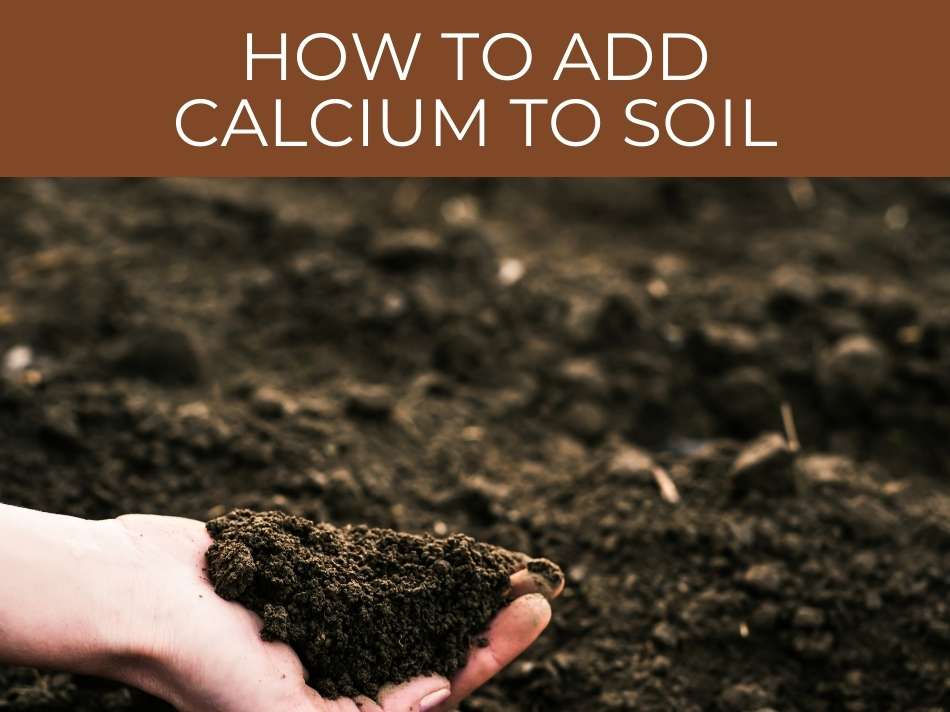
How to add calcium to soil
While you may have heard that calcium helps to create strong bones and teeth, the same can be said for plants.
The plant takes calcium from the soil through its roots. And, while it may be somewhat uncommon for there to be a calcium deficiency in nature, it does still happen.
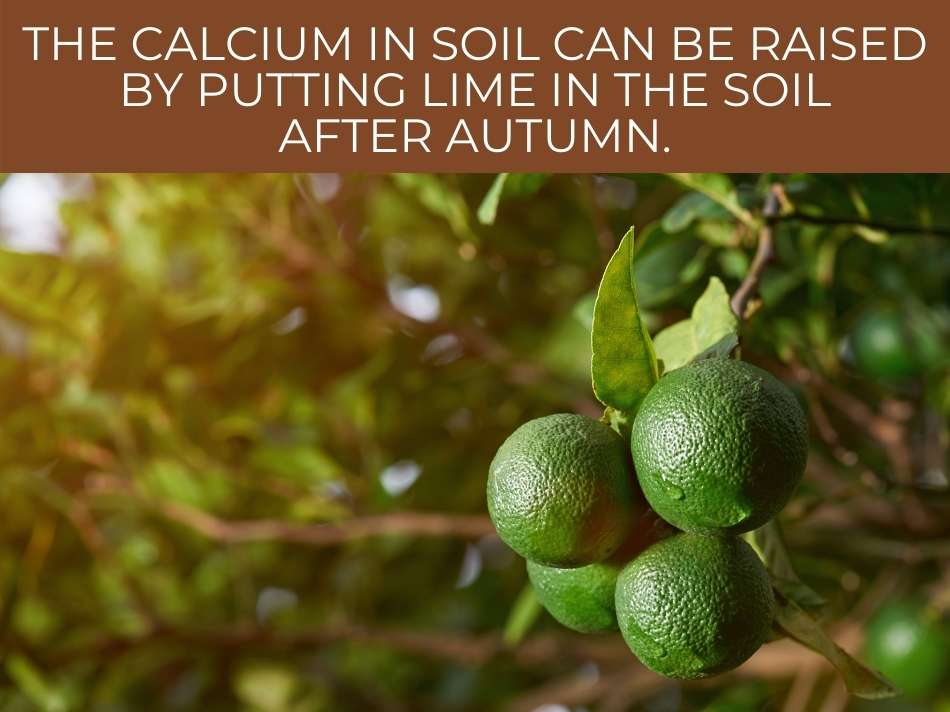
The calcium in soil can be raised by putting lime in the soil after autumn. Alternatively, egg shells may be added to compost which is added to the soil. This will also raise the calcium levels in the soil.
Lime is easily accessible through most garden and farm supply stores.
Keep in mind that lime will affect the pH of the soil and may also create soil that is more alkaline. It’s advised to test the soil first.
Find out what those little white things in your soil are (and how to get rid of them).
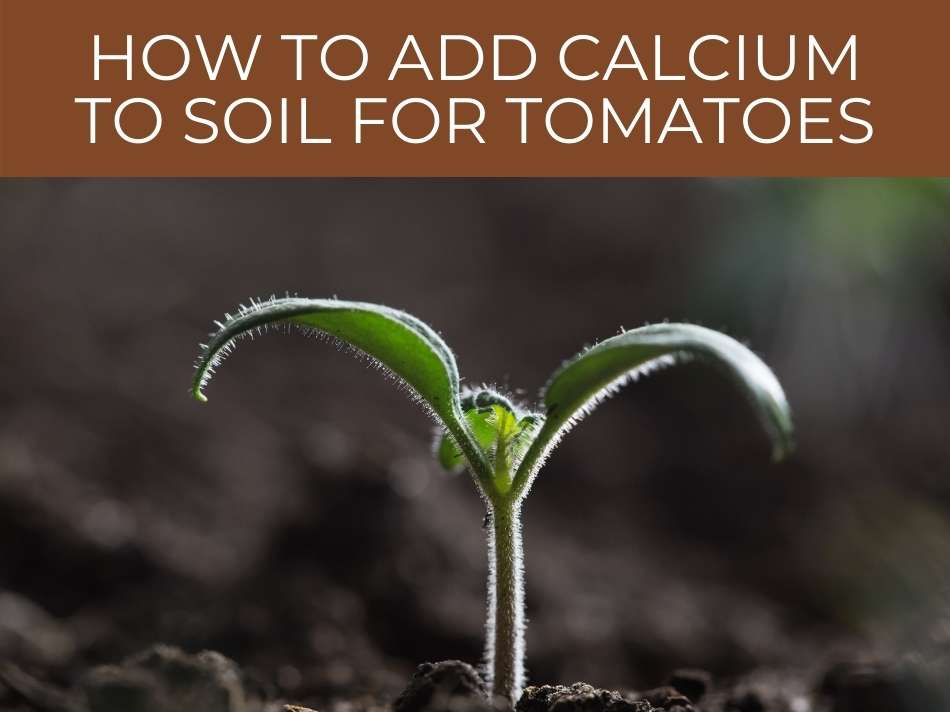
How to add calcium to soil for tomatoes
The tomato blossom-end rot is caused by a lack of calcium in the tissues of the tomato. It will initially appear as a water-soaked spot on either the blossom end or bottom of the tomato.
This can be prevented by adding calcium to the soil.
Shell meal, washed and crushed egg shell, as well as the shell of marine animals that have been ground up can be added to the soil to naturally raise the calcium levels in the soil.
You have two options. You could purchase shell meal from a nursery or from a farm supply store, or alternatively, you could make your own home-made calcium.
Add the crushed egg shell or shell meal to the soil, roughly six to eight inches deep, before planting your tomato seedlings.
See why your heirloom tomato plants aren’t producing fruit and what you can do about it.
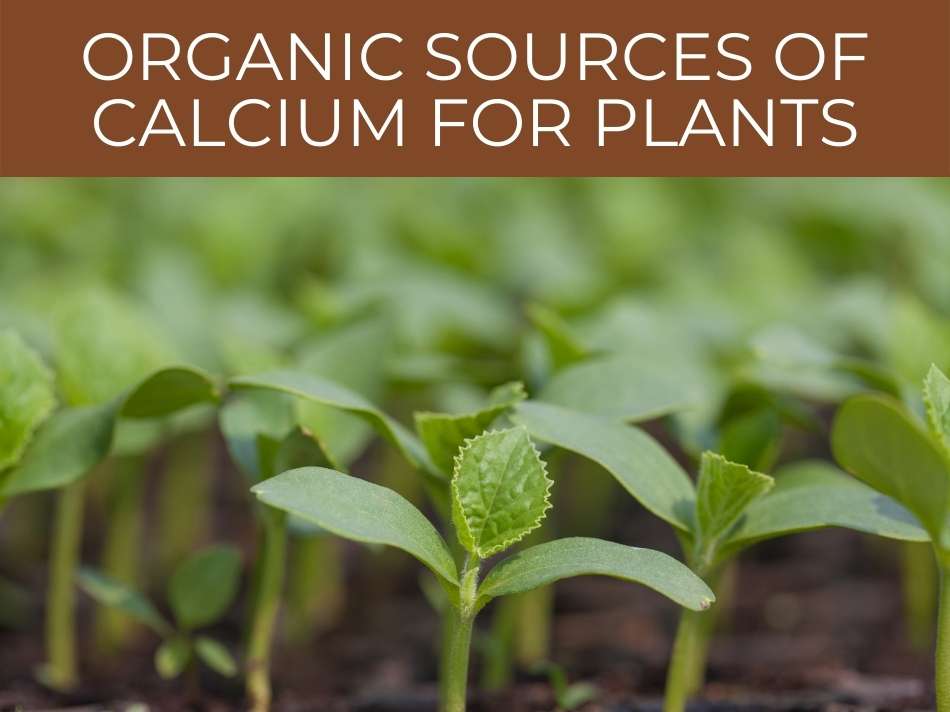
Organic sources of calcium for plants
There are other benefits to using organic calcium in soil to help plants grow.
Organic sources of calcium may be added to soil to help balance soil that is overly acidic and is important when growing leafy, green vegetables or cruciferous vegetables.
Sources of organic calcium that may be used in soil include crushed eggshells, dolomite lime, calcite, as well as oyster shell that has been ground up or, alternatively, oyster shell powder. These are sources that are readily available and inexpensive.
By ensuring that the soil has a sufficient amount of calcium, you will also ensure that the soil structure is healthy.
Calcium is responsible for regulating the pH balance of the soil in addition to aerating the soil, which allows for better water absorption.
It may, however, be necessary to test the alkalinity of the soil before adding a natural source of calcium as some forms of calcium, such as lime, will affect the PH balance of the soil.
Soil plays a vital role in plant growth. This article highlights the importance of soil for plants.
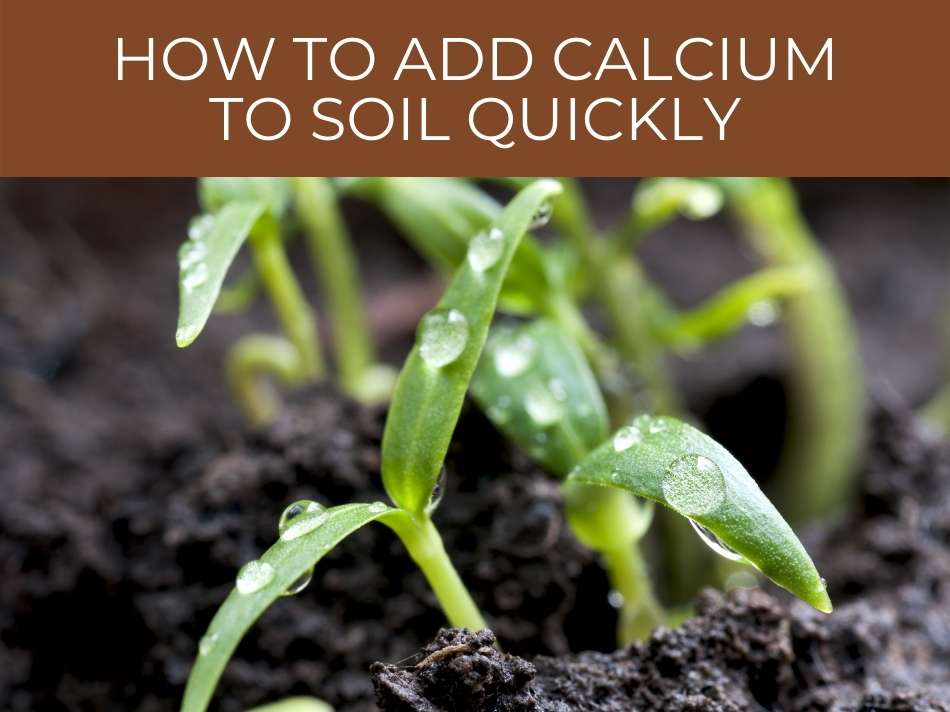
How to add calcium to soil quickly
Calcium may be added to soil by tilling or digging into the ground for approximately 8 to 12 inches.
When plants receive a sufficient amount of calcium, the plants are able to grow faster and thrive. Certain methods allow calcium to break down in the soil faster than others.
Adding lime to the soil is the fastest method of adding calcium to soil. It should be noted, however, that adding lime to soil will also raise the pH level of the soil, making it less acidic.
It’s best to add lime to soil during the autumn months as this allows several months for the calcium to dissolve into the soil before the seedlings are planted in the spring.
In addition, during the fall, periods of rain, snow, as well as freezing and thawing cycles, all help to break down the lime in the soil and get it to work as soon as possible.
Does your soil smell? Find out the common causes & fixed for it.
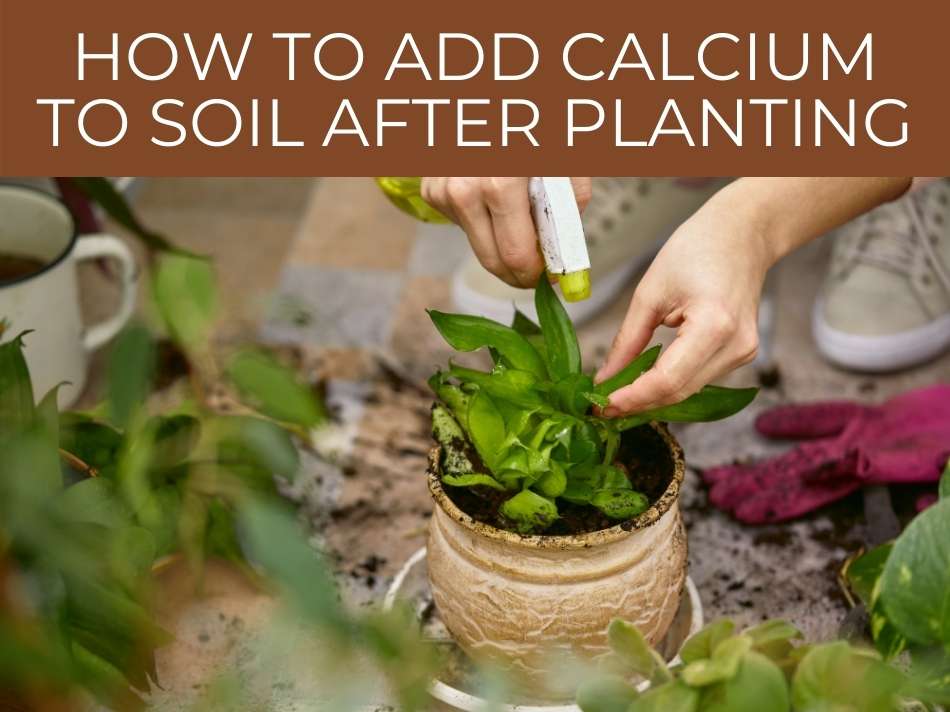
How to add calcium to soil after planting
If you haven’t added calcium before planting your seedlings, you can still add the calcium after the plants have started to grow.
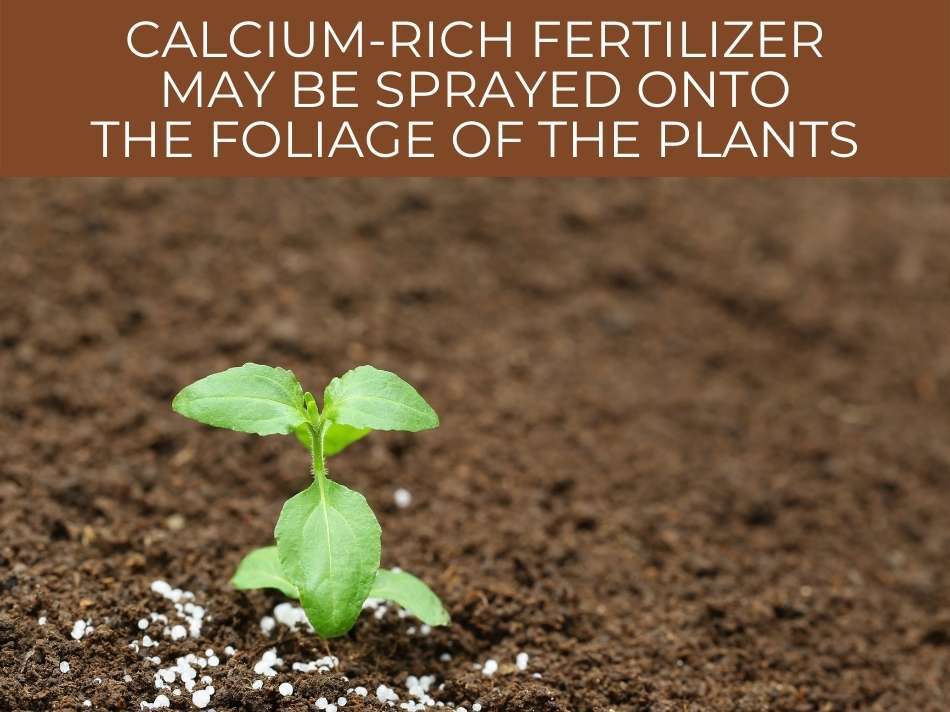
Calcium-rich fertilizer may be sprayed onto the foliage of the plants. The roots of the plant are responsible for the absorption of nutrients, but the leaves may also work to absorb nutrients into the plant. Fertilizer may be sprayed onto the leaves of the plant.
Gardeners are able to produce their own calcium-rich fertilizer at home.
By spraying the fertilizer directly onto the foliage of the plant, leaf necrosis, leaf necrosis, short brown roots, stunted growth, and fungal issues may all be prevented.
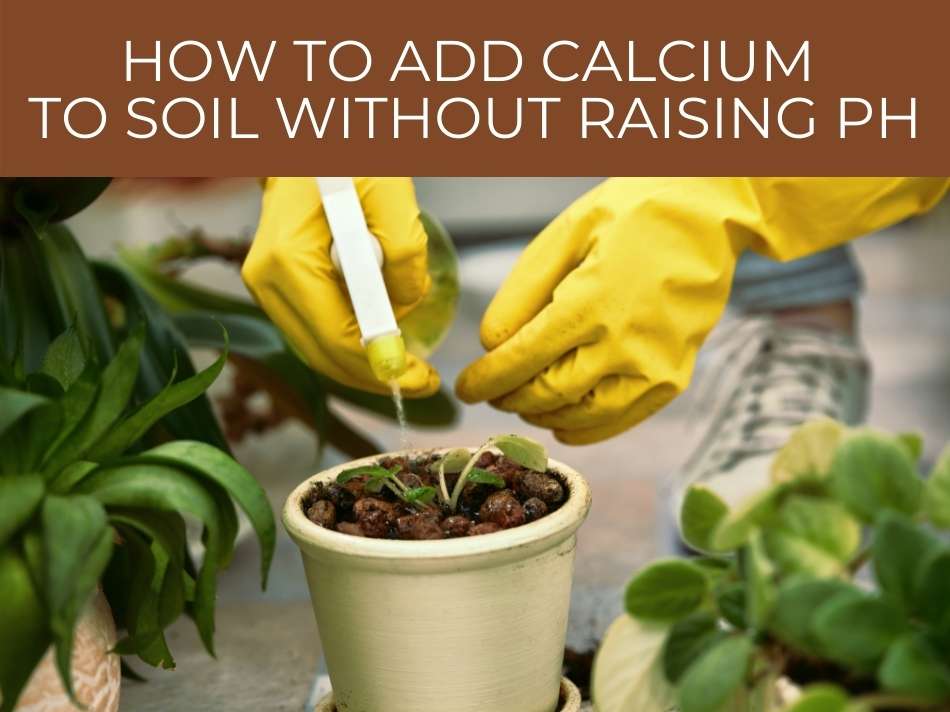
How to add calcium to soil without raising pH
It is important to maintain the pH balance of soil as this will adversely affect soil health as well as the ecological balance.
The ideal pH balance for soil should be pH 7.0. This is in fact a slightly acidic pH balance and is the range in which plants, flowers, and vegetables thrive.
Gypsum may be added to the soil as a source of calcium. This natural ingredient is known to add calcium without affecting the pH balance of the soil. Plants prefer soil that is slightly acidic and thus Gypsum lime will not affect or alter the pH balance of the soil.
When the pH balance of the soil is too high it tends to build up toxic levels of other specific nutrients.
An example of this is molybdenum. It is a plant nutrient, but when in excessively high amounts it can become poisonous to plants. This is not the only reason to maintain the pH balance.
A high pH can also limit the absorption of many nutrients.
The pH balance affects several other factors of plant growth including, nutrient availability and leaching, soil structure and bacteria, as well as toxic elements.
Gypsum does NOT raise soil pH.
Instead, gypsum is a reliable way to quickly add calcium to soil–without affecting pH.
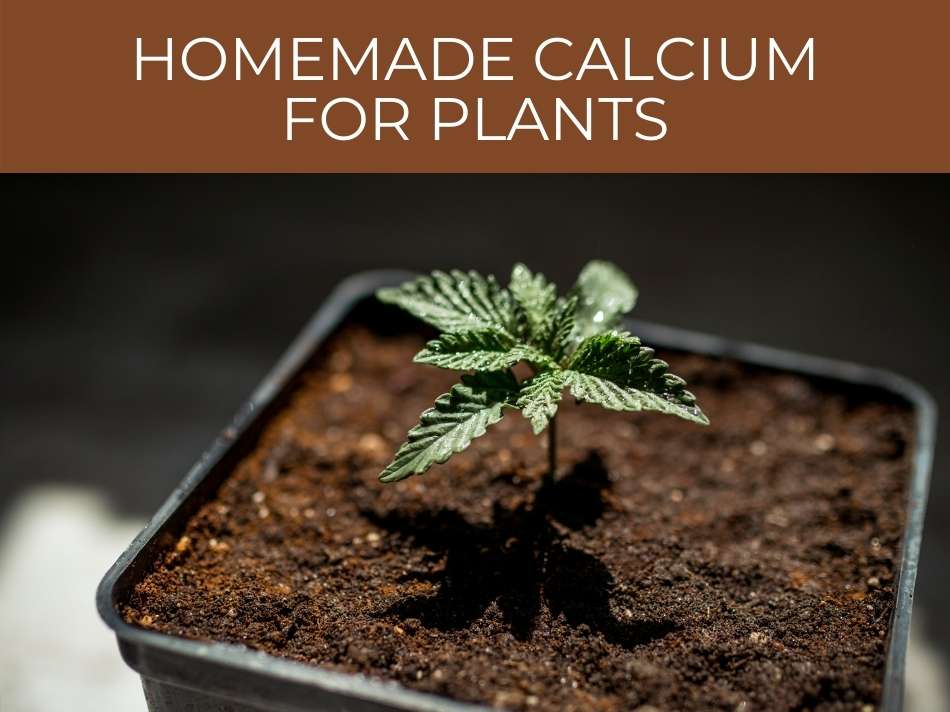
Homemade calcium for plants
There are two key ingredients that can make homemade calcium for your plants.
It isn’t always required to run to the supply store to buy fertilizer, organic calcium, or other nutrients for your plants. You may even have most of the ingredients you need to make homemade calcium in your kitchen already.
Add cleaned, crushed eggshells and vinegar into a mason jar. Do not crush the eggshells into powder form. Simply crush them to a medium coarse consistency. The mixture will produce bubbles. Once there are no more visible bubbles, the homemade calcium is ready for use.
After rinsing the eggshells, allow them to dry properly before crushing them. Keep in mind that the eggshells should be added to the vinegar very slowly and piece by piece.
Once the crushed eggshells have saturated the vinegar, the mixture is ready.

